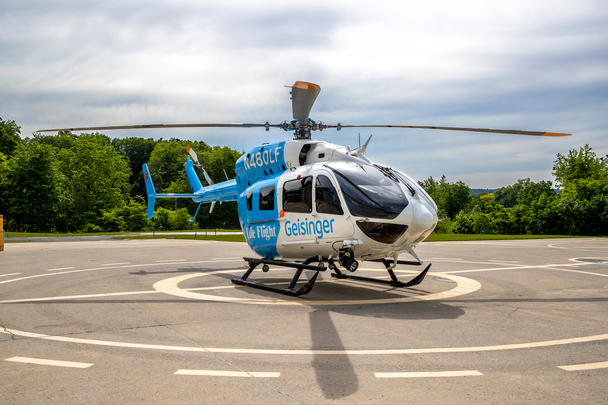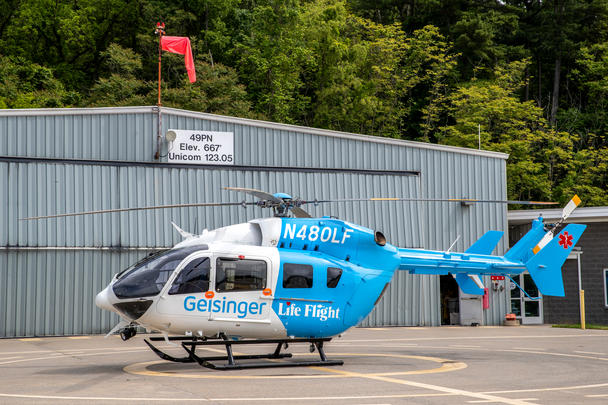Geisinger Life Flight celebrates 40 years of service

More than 100 years ago, Geisinger Medical Center was launched with a vision of providing exceptional health care to rural Pennsylvania. Today, Geisinger Life Flight plays an integral role in helping the health care provider meet that mission.
In 2021, Life Flight is celebrating 40 years of providing lifesaving care to critically ill and injured people of Pennsylvania. As a longtime customer of Airbus Helicopters Inc., Life Flight has transported more than 75,000 patients over the past four decades.
In Good Hands
Geisinger Life Flight lifted off for its first patient transport in an Alouette, on July 1, 1981. Since then, it has grown to become the second-largest air ambulance program in Pennsylvania. Geisinger now operates nine twin-engine Airbus helicopters: one BK117-C1 and eight Airbus EC145 helicopters.
This year, it acquired a newly refurbished EC145, equipped with the Garmin GTN 650/750 Xi series, certified for Single Pilot Instrument Flight Rules. The equipment allows pilots to visualize the entire flight plan, including holds and approaches, on a high-resolution touchscreen.
The EC145 is the predecessor to the H145, which is the leading twin-engine choice for EMS operators worldwide, thanks to its payload, range and a spacious cabin that allows for transport of medical teams and special equipment.
“When Life Flight is requested, both the air medical crew and patient need to have the peace of mind that they are in good hands,” said Jerry Splitt, Geisinger Life Flight program director and a critical care nurse who has been with the program for 33 years. “Airbus Helicopters has a proven record of safety and performance. Our aircraft are not simply helicopters. They are mobile intensive care units, and they are critical to fulfilling our mission.”

Investing in the future
Geisinger Life Flight continues to make investments in the future.
In recent years, it has expanded through an air medical collaboration with St. Luke’s University Health Network, invested in equipment to allow crews to carry blood and perform transfusions, and built a new helipad.
Geisinger has grown from about a dozen staff members to 150, including pilots, flight nurses, flight paramedics, communications specialists, emergency vehicle operators, maintenance and administrative staff. Each member plays an integral role in ensuring the seamless transition of care from emergency scenes or between hospitals to get patients as quickly as possible to the care they need.
Life Flight averages 3,600 transports each year, with six of its nine aircraft flying around the clock from bases in central and northeastern Pennsylvania.
‘Most difficult times’
About 70% of Life Flight transports are inter-facility transports, meaning the patient is transported from one facility to another facility for a higher level of care. This includes patients suffering from traumatic injuries, strokes, cardiac arrest or other life-threatening illnesses.
The other 30% of transports are responses to emergency calls throughout the service area. The team works closely with regional emergency medical services professionals and other first responders to quickly assess emergency situations and transport people in need of health care.
“Our flight crews are prepared to handle just about any kind of medical emergency, because they never know what they’re going to encounter on their shifts,” said Dr. David Schoenwetter, medical director for Geisinger Life Flight. “Life Flight’s mission is to do what’s best for the patient, and our crews are dedicated to caring for patients in their most difficult times.”
Airbus is proud to be a partner of Life Flight since day one of operation. The Airbus Allouettes operated by Life Flight were replaced with early BK 117 models in the mid 1980’s and early 1990’s. Geisinger continued to upgrade its patient care capability and safety by replacing the older BK 117’s with new EC145’s starting in 2006. Since inception, Life Flight has exclusively operated Airbus helicopters for 40 years in support of its life-saving missions.